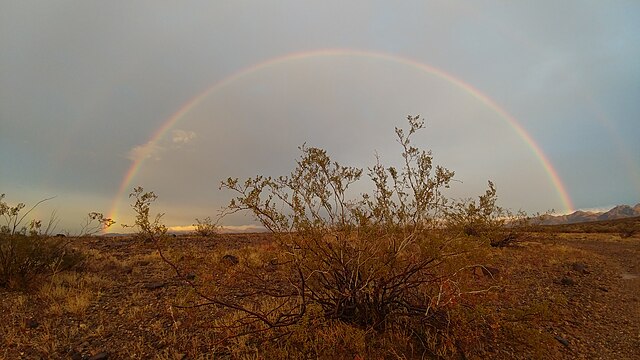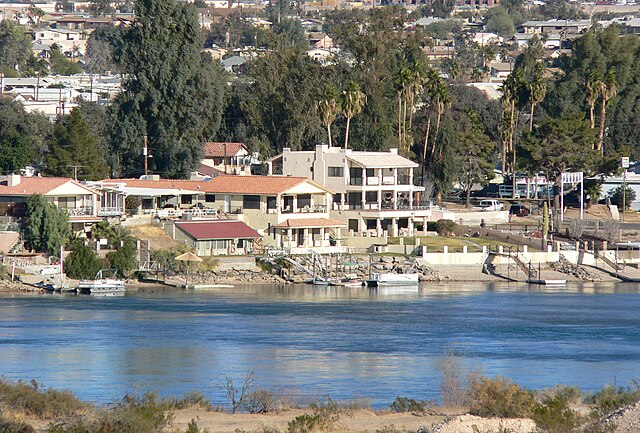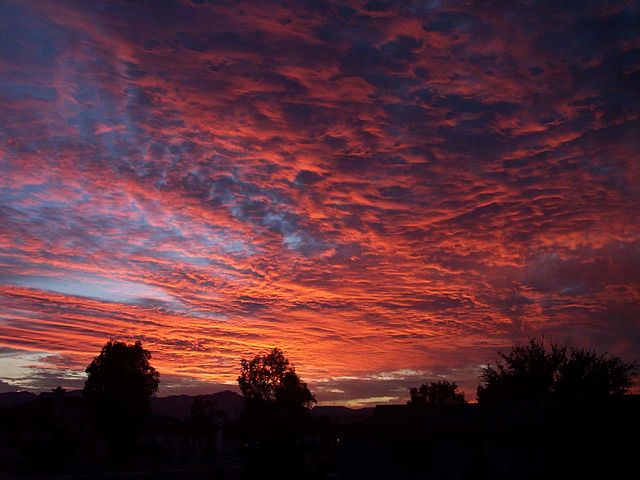Have you ever wondered what it’s like to live in one of Arizona’s hottest cities? Bullhead City, nestled along the Colorado River, offers a fascinating study in desert climate extremes. Whether you’re planning a visit, considering a move, or just curious about this unique weather pattern, understanding Bullhead City’s climate is essential for making the most of your time in this desert oasis.
Located in the Mojave Desert, Bullhead City experiences some of the most intense weather conditions in the United States. But don’t let that scare you away – this desert climate also brings incredible sunshine, stunning clear skies, and outdoor opportunities that many other climates simply can’t match.
Understanding Bullhead City’s Unique Climate
Geographic Location and Weather Influences
Bullhead City sits at approximately 1,900 feet above sea level in northwestern Arizona, directly across the Colorado River from Laughlin, Nevada. This strategic location creates a unique microclimate that’s influenced by several key factors. The surrounding mountains create a natural bowl effect, trapping heat and creating what meteorologists call a “heat island.”
The Colorado River provides some moderating influence, but it’s not enough to significantly cool the intense desert heat. Instead, the river creates humidity that can make the summer temperatures feel even more oppressive. Think of it like stepping into a giant outdoor sauna – the combination of heat and moisture creates an almost overwhelming sensation.
The city’s position in the Mojave Desert means it receives intense solar radiation year-round. With over 300 days of sunshine annually, Bullhead City ranks among the sunniest places in America. This consistent sunshine is both a blessing and a challenge, providing incredible opportunities for solar energy but also creating extreme heat conditions.
Desert Climate Characteristics
Desert climates are characterized by extreme temperature variations, low humidity, and minimal precipitation. Bullhead City exemplifies these characteristics perfectly. The area receives less than 5 inches of rainfall annually, making it one of the driest cities in the United States.
What makes desert weather so unique is the dramatic temperature swings. While summer days can soar above 120°F, winter nights can drop into the 30s. This temperature variation happens because desert air holds very little moisture, which means it can’t retain heat effectively. It’s like the difference between a thick blanket and a thin sheet – moisture acts as insulation for our atmosphere.
The low humidity levels, typically ranging from 10-30%, create an environment where sweat evaporates quickly. This rapid evaporation can be both helpful and dangerous. While it provides natural cooling, it also means dehydration happens much faster than in humid climates.
Seasonal Weather Patterns in Bullhead City

Spring Weather (March-May)
Spring in Bullhead City is arguably the most pleasant time of year. As winter’s grip loosens, temperatures gradually climb from the comfortable 70s in March to the challenging 90s by May. This season represents the sweet spot for outdoor activities and tourism.
Temperature Ranges and Precipitation
March typically sees daytime highs in the mid-70s to low 80s, with nighttime lows in the 50s. April brings warmer conditions, with highs reaching the upper 80s to low 90s. By May, you’re looking at temperatures that can hit the triple digits, signaling the approach of summer’s intensity.
Precipitation during spring is minimal, with occasional light showers that might bring 0.5 to 1 inch of rain for the entire season. These rare rain events are often celebrated by locals who understand how precious water is in the desert.
What to Expect in Spring
Spring offers perfect conditions for hiking, boating, and outdoor festivals. The weather is warm enough for swimming and water sports but not so hot that outdoor activities become dangerous. You’ll find clear skies, gentle breezes, and comfortable conditions for exploring everything Bullhead City has to offer.
This is also wildflower season in the surrounding desert. When conditions are right, the landscape transforms with colorful blooms that seem to appear overnight. It’s nature’s way of taking advantage of the mild temperatures and occasional moisture.
Summer Weather (June-August)
Summer in Bullhead City is not for the faint of heart. This is when the desert shows its true power, with temperatures that can literally be life-threatening if you’re not prepared. The season brings extreme heat that tests both residents and visitors.
Extreme Heat and Safety Considerations
Summer temperatures regularly exceed 110°F, with many days reaching 115-120°F. The record high of 128°F was recorded in June 1994, making it one of the hottest temperatures ever recorded in the United States. These aren’t just numbers – they represent conditions that can cause heat stroke, dehydration, and even death.
The heat becomes particularly dangerous because it doesn’t significantly cool down at night. Low temperatures might only drop to 85-90°F, providing little relief. It’s like living inside an oven that never quite turns off.
Summer Activities and Weather Tips
Despite the extreme heat, summer activities are still possible with proper precautions. Early morning and late evening become prime times for any outdoor activities. Many locals adjust their schedules completely, becoming active before sunrise and after sunset.
Water activities become essential rather than optional. The Colorado River, local pools, and air-conditioned spaces become refuges from the heat. Many businesses and attractions adjust their hours to accommodate the extreme temperatures.
Fall Weather (September-November)
Fall brings welcome relief as temperatures begin their gradual descent from summer’s peaks. This season offers some of the most comfortable weather conditions, though it starts quite hot and slowly improves.
Cooling Trends and Comfortable Temperatures
September can still be brutally hot, with temperatures often reaching 110°F or higher. However, as the month progresses, you’ll notice the gradual cooling trend. October brings more manageable temperatures in the 80s and 90s, while November offers pleasant conditions in the 70s and 80s.
The cooling happens gradually, unlike the dramatic temperature swings you might expect in other climates. It’s more like slowly turning down a thermostat than flipping a switch.
Winter Weather (December-February)
Winter in Bullhead City is what draws many visitors and “snowbirds” to the area. While much of the country deals with snow, ice, and freezing temperatures, Bullhead City offers mild, pleasant conditions that feel like spring in most other places.
Mild Winters and Rare Weather Events
Daytime temperatures in winter typically range from the mid-60s to low 70s, with nighttime lows in the 40s to 50s. Occasionally, temperatures can drop into the 30s, and very rarely, frost might occur. These cold snaps are brief and unusual enough to make local news.
Snow is extremely rare, occurring perhaps once every 10-15 years and usually melting within hours. When it does snow, it’s a major event that brings out cameras and excitement from residents who may have never seen snow in their desert home.
Monthly Weather Breakdown
Hottest and Coolest Months
July consistently ranks as the hottest month, with average highs of 116°F and lows of 89°F. August follows closely, maintaining similar extreme temperatures. The combination of intense heat and occasional monsoon humidity makes these months particularly challenging.
December and January are the coolest months, with average highs in the upper 60s to low 70s and lows in the 40s to low 50s. These months offer the most comfortable conditions for outdoor activities and sightseeing.
Rainfall Patterns Throughout the Year
Bullhead City’s rainfall follows a bimodal pattern, with two brief rainy seasons. The first occurs in winter (December-February) when Pacific storm systems occasionally bring light rain. The second, more dramatic period happens during the summer monsoon season (July-September).
The monsoon season can bring intense but brief thunderstorms that dump significant amounts of rain in short periods. These storms often produce more lightning and wind than actual rainfall, but when they do bring rain, it can cause flash flooding in the desert washes.
Extreme Weather Events in Bullhead City
Record Temperatures and Heat Waves
Bullhead City holds some impressive temperature records that showcase the extreme nature of desert climate. The all-time high of 128°F ties it with some of the hottest temperatures ever recorded on Earth. Extended heat waves, where temperatures exceed 115°F for multiple consecutive days, are not uncommon.
These extreme temperatures aren’t just uncomfortable – they’re dangerous. Heat-related illnesses spike during these periods, and the infrastructure can be strained as air conditioning systems work overtime.
Monsoon Season and Flash Floods
The summer monsoon season brings a different type of extreme weather. While the storms provide welcome relief from the heat, they can also create dangerous conditions. Flash floods are a real concern, as the hard-packed desert soil can’t absorb water quickly enough.
Staying Safe During Monsoons
Monsoon safety is crucial for anyone in Bullhead City during summer months. Never attempt to drive through flooded roads – it takes surprisingly little water to sweep away a vehicle. Stay informed about weather conditions and have a plan for severe weather.
The storms can also bring powerful winds, lightning, and sudden temperature drops. While a 20-degree temperature drop might sound welcome, the sudden change can catch people off guard.
Best Times to Visit Bullhead City

Peak Tourist Season Weather
The peak tourist season runs from October through April, when temperatures are most comfortable for outdoor activities. This period offers the best weather for boating, hiking, golfing, and exploring the area’s attractions.
October through December provides warm days and cool nights, perfect for camping and outdoor adventures. January through March offers the mildest conditions, ideal for those seeking escape from winter weather elsewhere.
Off-Season Advantages
Visiting during the off-season (May through September) offers certain advantages despite the heat. Hotel rates are significantly lower, attractions are less crowded, and you’ll experience the true intensity of desert living.
Early morning and late evening activities during summer can be magical, with stunning sunrises and sunsets that seem more vibrant in the clear desert air. The extreme heat also creates unique photographic opportunities and a true appreciation for the desert’s power.
Weather-Related Activities and Attractions
Water Sports and River Activities
The Colorado River becomes essential during hot weather, providing relief and recreation opportunities. Boating, jet skiing, and swimming are popular year-round, but they become necessities during summer months.
The river maintains relatively consistent temperatures, staying comfortable for water activities even during the hottest summer days. Many residents and visitors plan their entire summer around river activities.
Outdoor Recreation Based on Weather
Weather dictates outdoor recreation in Bullhead City more than in most places. Hiking is best from October through April, with early morning starts essential even during cooler months.
Golf courses adjust their schedules seasonally, with summer rounds starting before sunrise. Desert landscaping and gardening follow weather patterns, with most outdoor work happening during cooler months.
Climate Change and Future Weather Trends
Climate change is affecting desert regions like Bullhead City in unique ways. Rising temperatures are making extreme heat events more frequent and intense. The area is experiencing longer periods of extreme heat and higher overnight temperatures.
Water availability is becoming an increasingly important concern as the Colorado River faces ongoing drought conditions. These changes will likely affect future weather patterns and living conditions in the region.
Weather Preparedness and Safety Tips
Heat Safety Measures
Living with or visiting extreme heat requires specific safety measures. Always carry water, wear light-colored clothing, and limit outdoor activities during peak heat hours (10 AM to 6 PM) during summer.
Recognize the signs of heat exhaustion and heat stroke. Symptoms include excessive sweating, dizziness, nausea, and confusion. When in doubt, seek air-conditioned shelter immediately.
Emergency Weather Preparedness
Desert weather can change quickly, especially during monsoon season. Keep emergency supplies including water, non-perishable food, flashlights, and a battery-powered radio.
Have a plan for power outages, which can be dangerous during extreme heat. Know where cooling centers are located and how to access them if needed.
Conclusion
Bullhead City’s weather represents one of the most extreme climates in the United States, offering both incredible challenges and unique rewards. The intense summer heat tests human endurance, while the mild winters provide perfect conditions for outdoor activities and relaxation.
Understanding these weather patterns is crucial for anyone planning to visit or live in Bullhead City. The key to enjoying this desert climate is respecting its power, preparing properly, and timing your activities to work with rather than against the weather.
Whether you’re drawn by the endless sunshine, the water activities, or the unique beauty of the desert landscape, Bullhead City’s weather will certainly make an impression. With proper preparation and respect for the climate, you can safely enjoy all that this remarkable desert city has to offer.
Frequently Asked Questions
1. What is the hottest temperature ever recorded in Bullhead City?
The highest temperature ever recorded in Bullhead City was 128°F (53.3°C) in June 1994. This ties Bullhead City with some of the hottest temperatures ever recorded on Earth and makes it one of the most extreme weather locations in the United States.
2. When is the best time to visit Bullhead City for comfortable weather?
The best time to visit Bullhead City is from October through April, when daytime temperatures range from the 70s to 90s°F. January through March offers the most comfortable conditions with mild temperatures perfect for outdoor activities, sightseeing, and water sports.
3. How much rain does Bullhead City receive annually?
Bullhead City receives less than 5 inches of rainfall per year, making it one of the driest cities in the United States. Most precipitation occurs during two brief periods: winter storms (December-February) and summer monsoons (July-September).
4. Is it safe to visit Bullhead City during summer months?
While summer visits are possible, they require extreme caution and preparation. Temperatures regularly exceed 115°F, which can be dangerous or life-threatening. If visiting in summer, plan activities for early morning or late evening, stay hydrated, and always have access to air conditioning.
5. How does the Colorado River affect Bullhead City’s weather?
The Colorado River provides some moderating influence but also adds humidity to the desert air. While it offers relief through water activities and slightly cooler temperatures near the water, the added moisture can make summer heat feel more oppressive by reducing the effectiveness of natural evaporation cooling.

